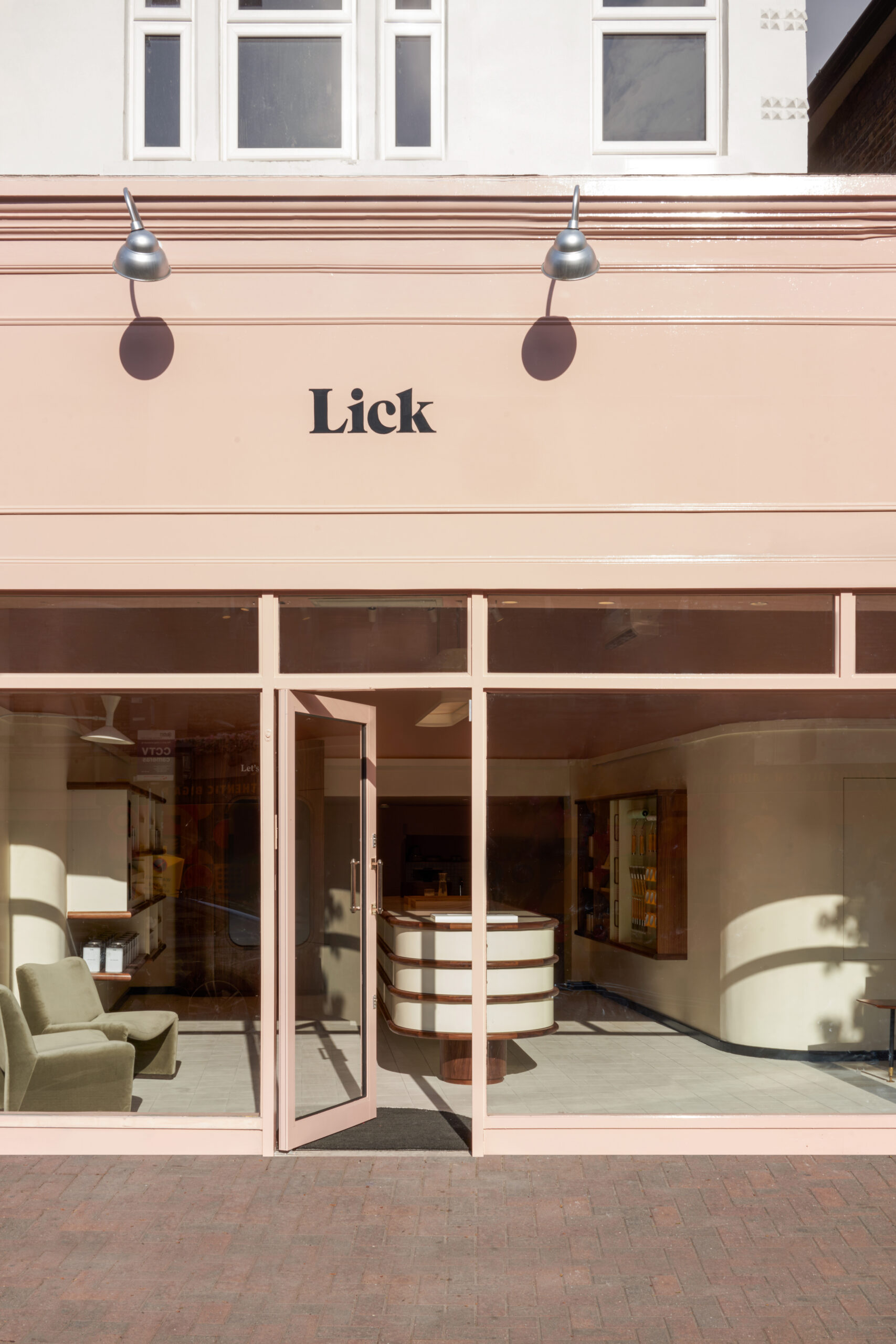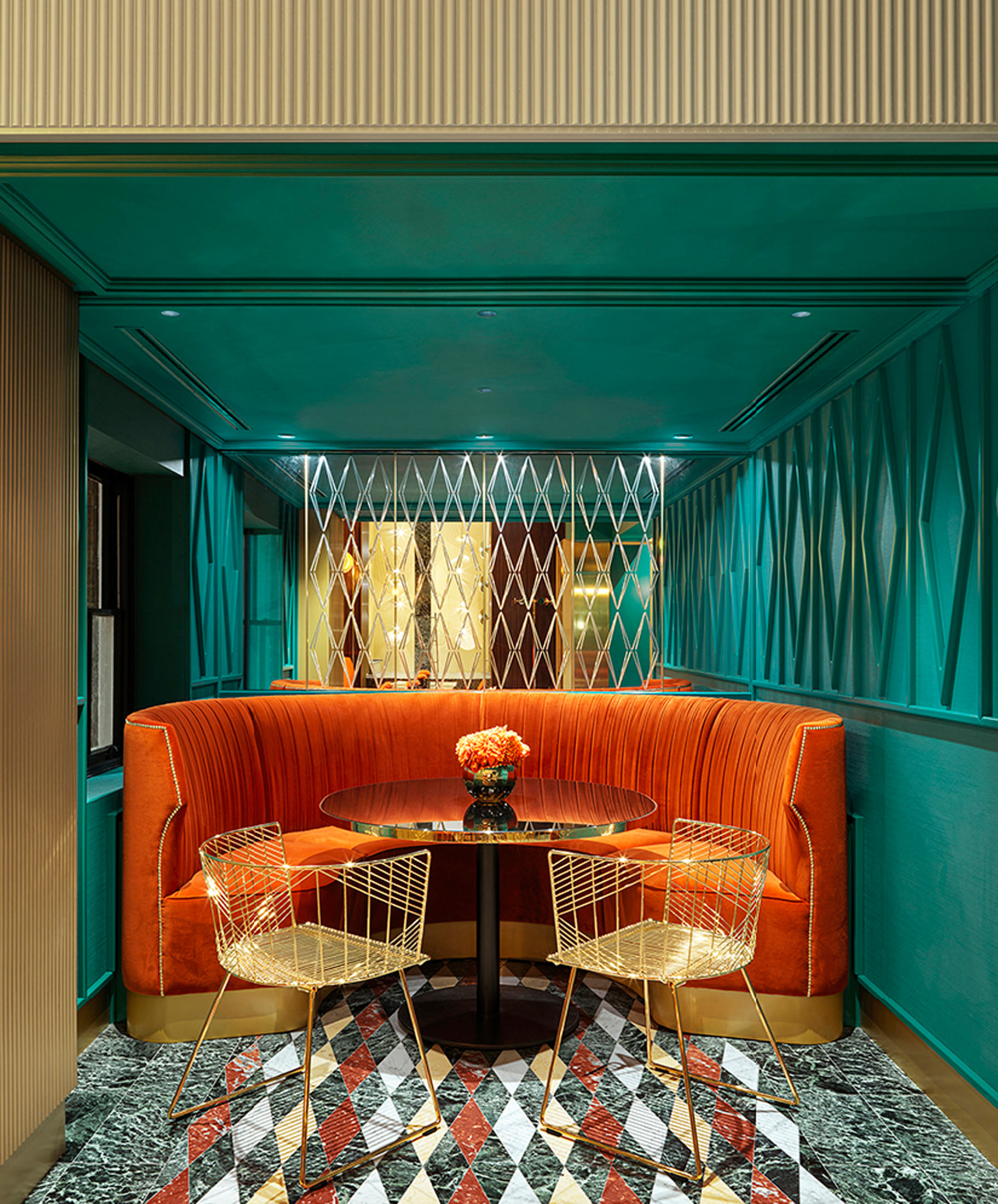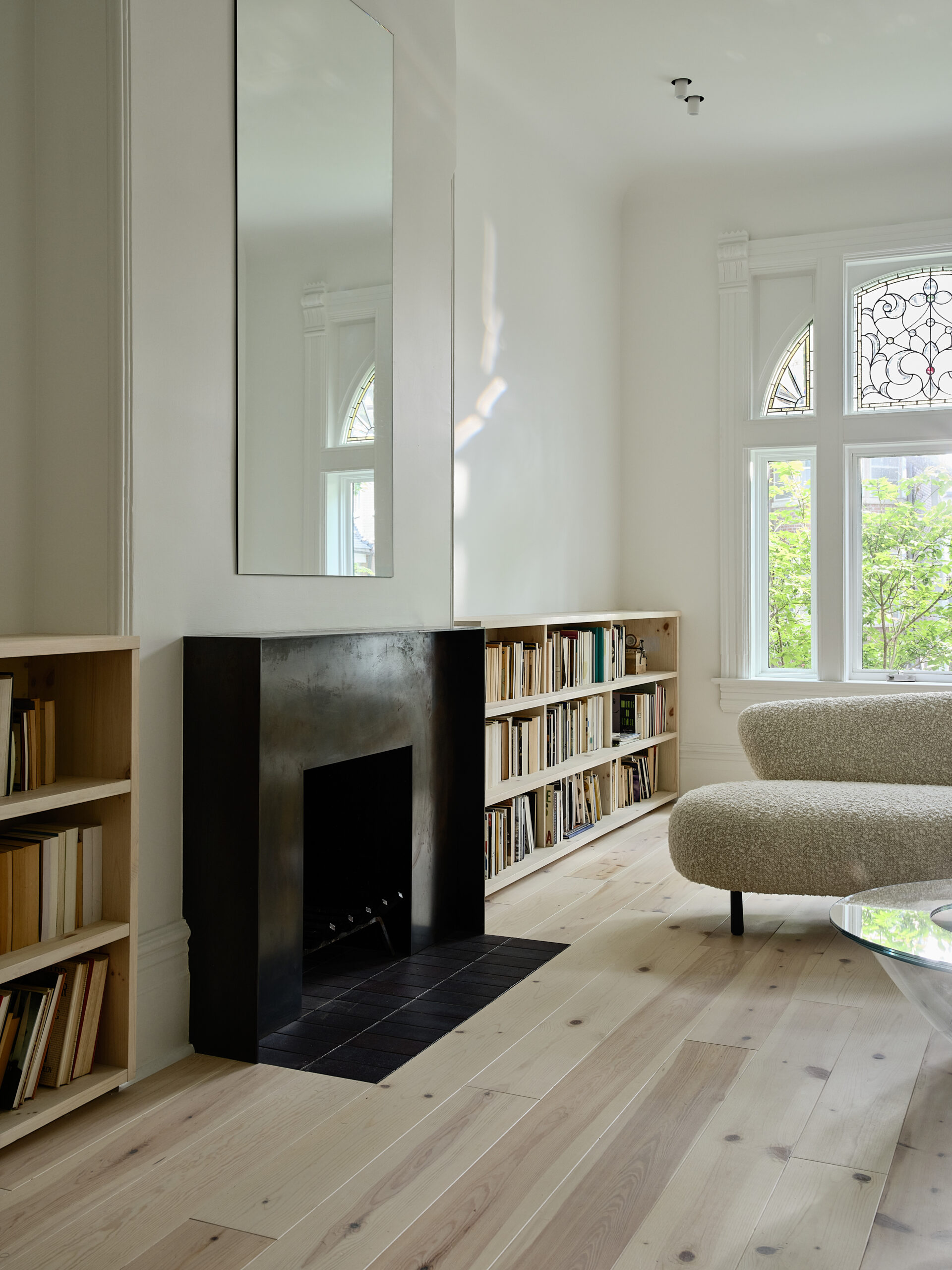-
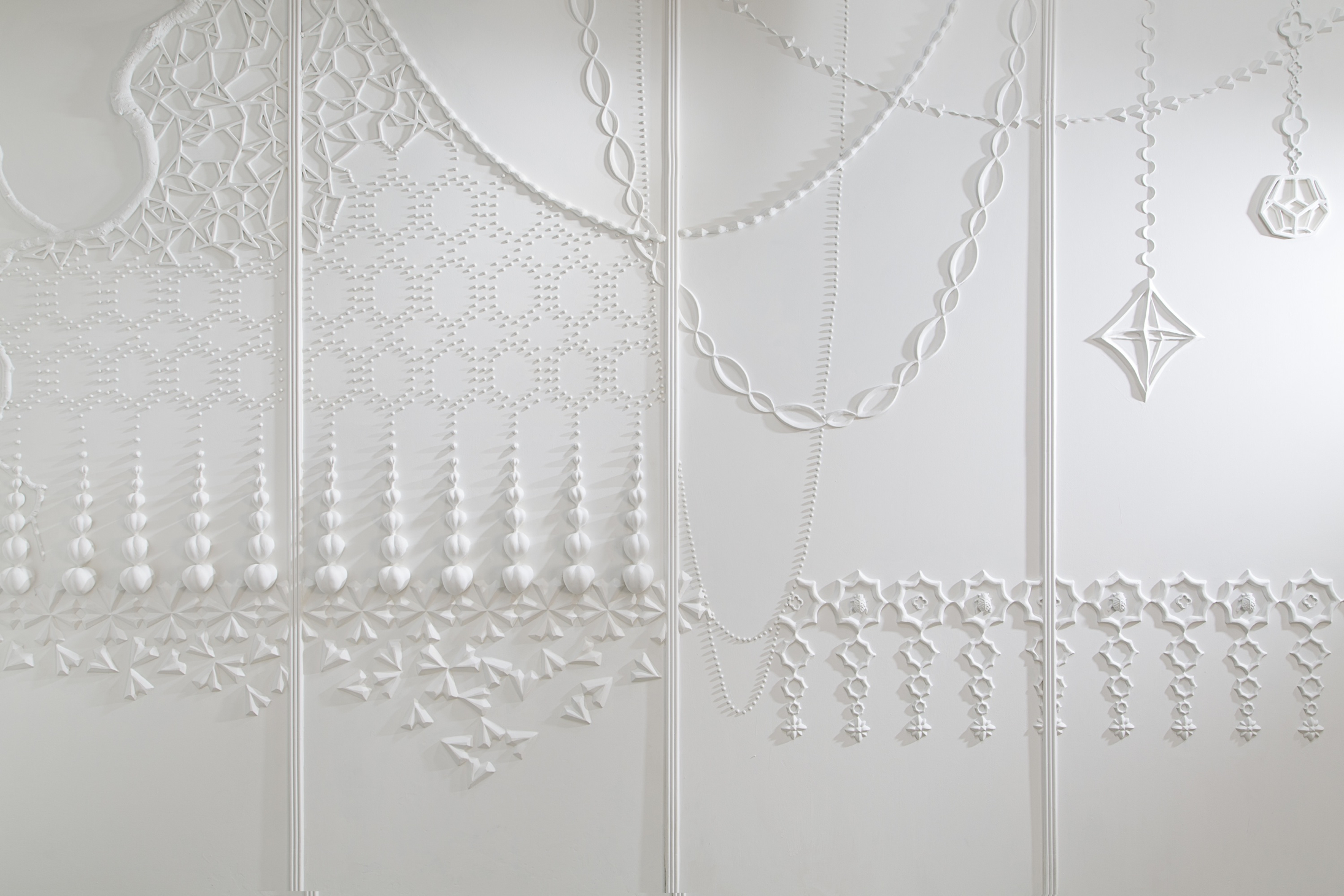
Chinoiserie panelled room installation in plaster and porcelain, 2015.
-

Radial branch illuminated sculpture in bronze with porcelain magnolia and cherry blossoms, 2015; Lattice ribbon table in cast bronze with five legs, 2015.
-
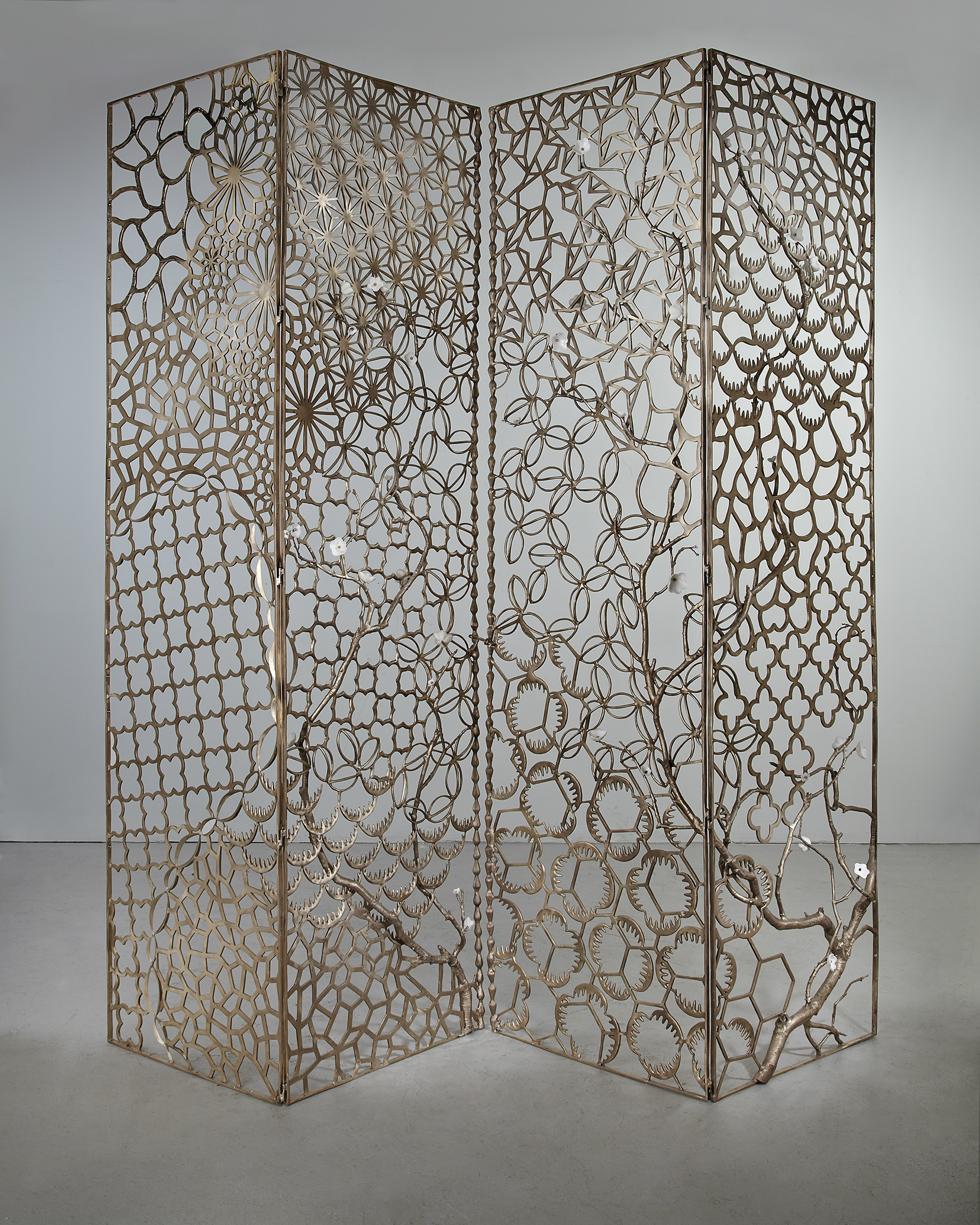
Garden Gate screen in bronze with porcelain blossoms, 2013.
-
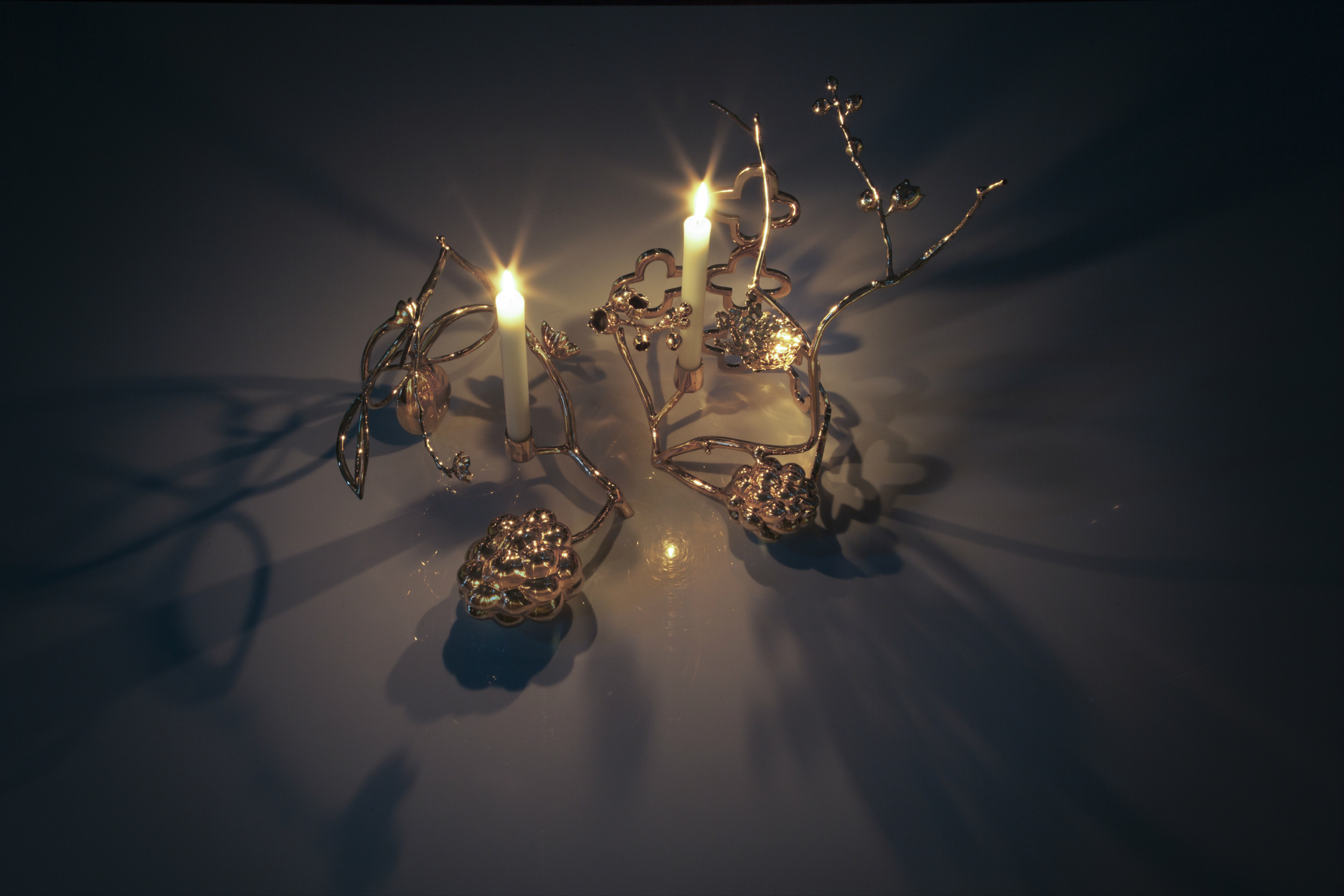
Candlesticks with tufted fruit, cherry blossoms, and seedpods in polished bronze, 2015.
-
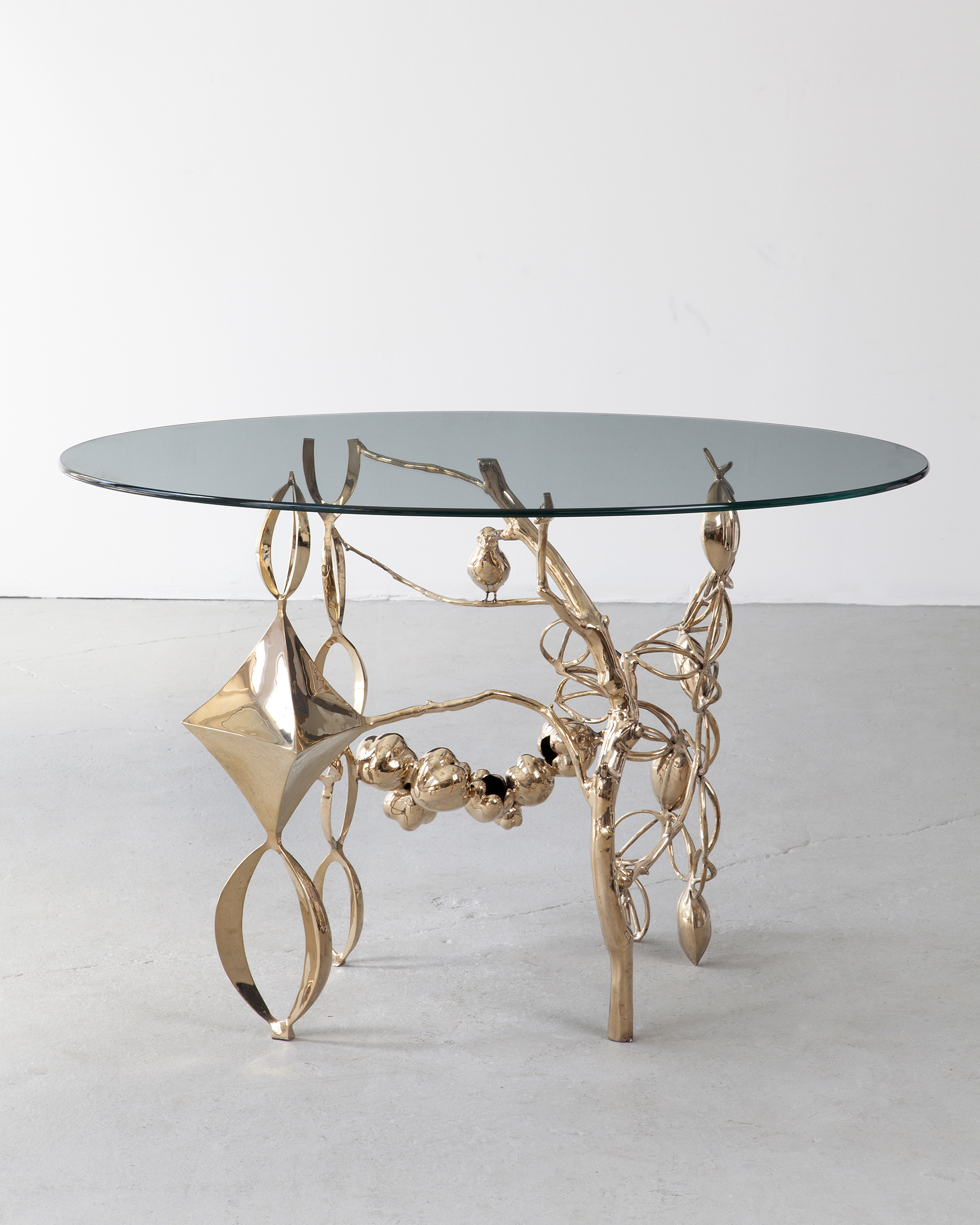
Side table in bronze with glass top, 2013.
-

Rug in wool and silk. Manufactured by Amini, Nepal, 2014. Edition 2 of 12, plus 3 artist proofs.
-
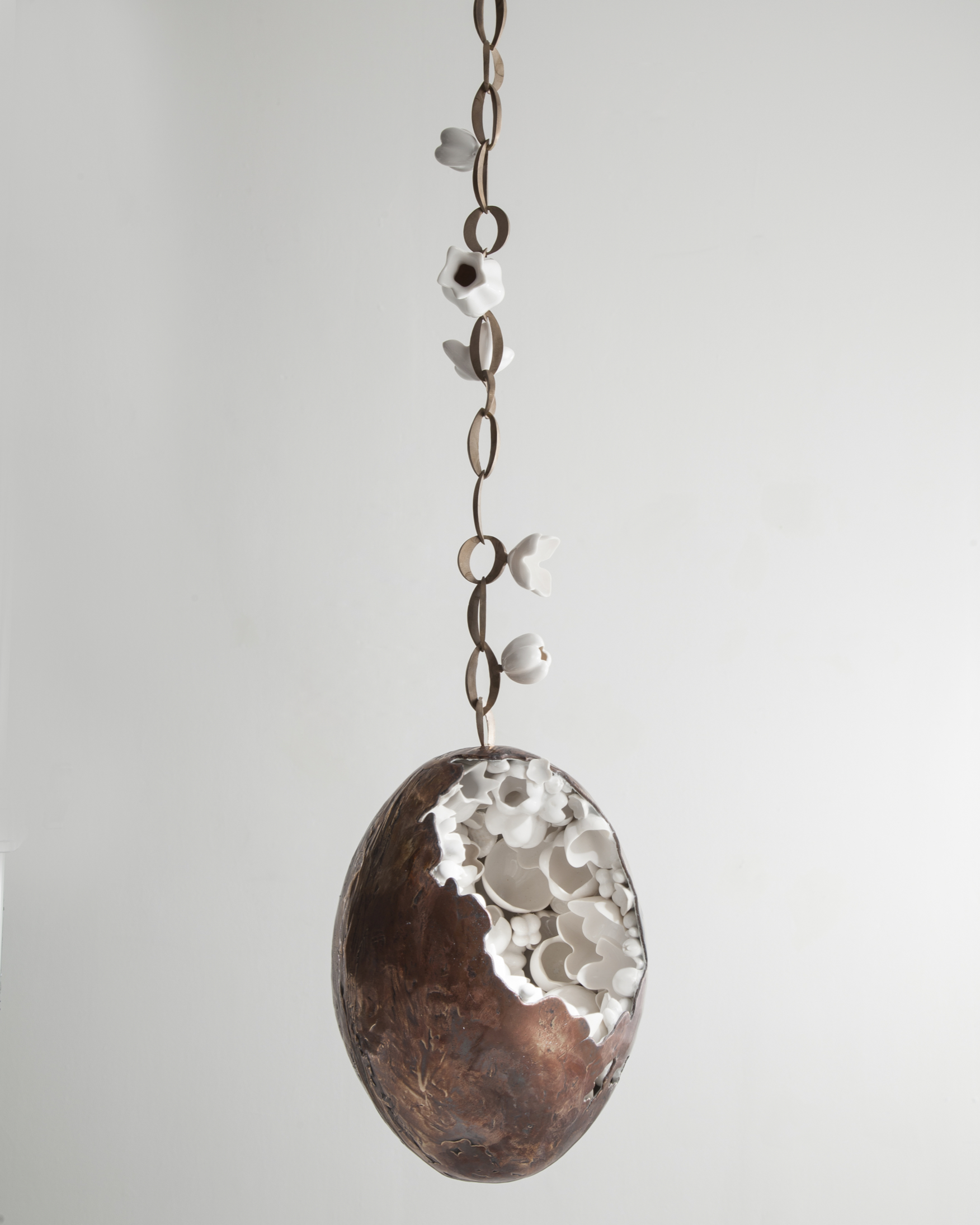
Hanging cornucopia in bronze and porcelain, 2015.
-

Small pellet scent box in gold-plated bronze with custom scent, 2015.
Wilderness and Ornament
Back to our roots.
David Wiseman’s Wilderness and Ornament installation at New York’s R & Company is reminiscent of a Grimm Brothers’ fairy tale forest: the beauty is at once both glamorous and raw. The pieces, which include side tables, bowls, and candleholders, are either weathered or polished bronze, a play between nature and nurture. Wiseman began creating room installations in 2005, crafting ceilings and walls composed of vines and branches. “It was this really interesting dialogue with the architecture,” Wiseman says. “Engaging in this [conversation] of the history of decorative arts took me through this aesthetic journey from different cultures and textile patterns—architectural ornaments from the past.” Wilderness and Ornament is an extension of this journey.
The installation is somewhat a rediscovery of Wiseman’s fascination with patterns. His Pasadena upbringing included time spent outdoors connecting with nature, and he cites his grandmother’s collection of design books as a lasting inspiration. One book in particular, Owen Jones’ The Grammar of Ornament, explores design motifs from a variety of cultures around the world. “At its root, patterns and ornamentation [are] about how different cultures have internalized and celebrated the natural world,” Wiseman says, noting that once he started understanding patterns, they began to stand out during his travels, specifically in Nepali, Chinese, Incan, and Mayan structures. Wiseman notes that though the approach to patterning varied between cultures, he felt that they showed how humans use them as a way to “make sense of the mysterious and magical world.”
Wilderness and Ornament doesn’t merely demonstrate patterns that exist within design, but also how they create designs, too. Even the floral- and tree-inspired formations in the wool and silk rugs and the Garden Gate screen, though immediately noticeable, act more as a nod to repetitions that occur in the natural world, rather than an immaculate display of product design.
Each piece in Wilderness and Ornament explores this title duality, which is perhaps best encapsulated by the hanging cornucopia; a rough, egg-shaped piece that is cracked open to reveal a blooming porcelain interior. Wiseman is particularly looking forward to unveiling the cast bronze gold- and silver-plated scented spheres structures containing carved rocks that were soaked for a month in a custom scent from l’Oeil du Vert’s Haley Alexander van Oosten. “It’s like [holding] a whole universe in the palm of your hand,” Wiseman says, a testament to each item in the installation making its own complete narrative, rather than merely being a fragment of a whole.
This harmony is further embodied in the blatant rhombuses and ovals bursting from table legs interwoven with bird and flower sculptures. “Even geometry at its elemental level has inspiration in natural forms,” he says. “It’s about seeing the unity between the wilderness outside and bringing it indoors.” Wiseman is able to simultaneously capture and allow growth for this ephemeral quality, bringing design back to its roots.





